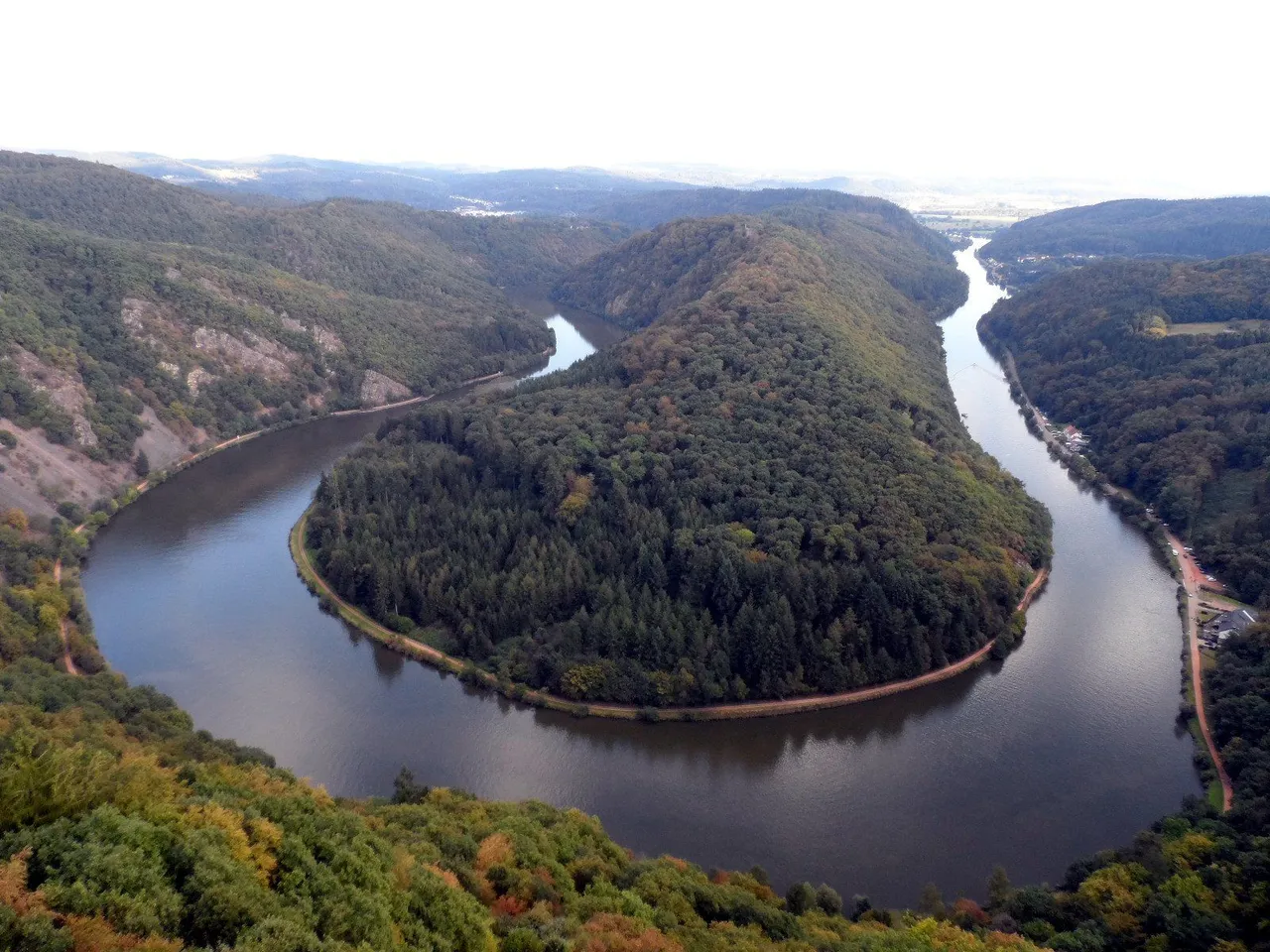UNKNOWN BEAUTY OF NATURE:
The Saarschleife, located in Germany’s Southwest, shows that the beauty of nature is present all over the world, whether it is in Europe or in the Pacific.
Samoa can without a doubt be described as a country best known for its hospitality, its rich and traditional culture and of course the numerous natural wonders that make the archipelago a special one in the world.
When visiting the To Sua Ocean Trench on the island of Upolu, one can have a pretty good impression of what makes Samoa a tropical paradise in the South Pacific.
The swimming hole, which is surrounded by a variety of beautiful, lush gardens, certainly belongs to the country’s most prominent spots with its characteristic turquoise blue water.
If you ask most people on earth, what their description of a natural wonder would look like, they would most likely come up with something that resembles this description of a paradise in the South Pacific Ocean.
But what about other places on earth, especially those whose beauty still has to be discovered by many, as it is by now not as ubiquitous as the typical natural wonders of our world? If you take a close look to the Southwest of Germany, you can find a beautiful natural wonder that almost no one has ever heard of.
This wonder is called Saarschleife.
Located in Germany’s second smallest federate state in terms of total population, the Saarland, the natural beauty of the Saarschleife can look back on a long history.

Die Saarschleife beginnt kurz hinter dem Merziger Stadtteil Besseringen und endet in Mettlach. Die Luftlinie zwischen Besseringen und Mettlach beträgt nur etwa zwei Kilometer. Die Saar macht jedoch einen Umweg, der nahezu zehn Kilometer beträgt.
Auf dem bewaldeten Bergrücken innerhalb der Saarschleife befinden sich die Kirche St. Gangolf mit Teilen der ehemaligen Klosteranlage und die Burgruine Montclair. Der einzige unmittelbar an der Saarschleife gelegene Ort ist das Dorf Dreisbach, zu dem man mit einer Fähre übersetzen kann.
Sowohl auf der Innen- wie auf der Außenschleife verläuft ein durchgehender Wander- und Radweg. Ein etwa 100 Hektar großes Gebiet westlich der Saarschleife steht als Steinbachtal westlich Saarschleife unter Naturschutz.
The state’s name itself derives from the name of its biggest river, the Saar, which does not only cross most of the state’s area but also the one of the neighboring federate state, Rhineland-Palatinate.
The Saarschleife can easily be described as the river’s most beautiful spot, although the Saar offers a whole range of spectacular viewpoints with its total length of approximately 235 kilometers.
During these eleven kilometers of the Saarschleife, which means in translation “bight of the Saar”, the river is different, as it suddenly follows a sinuosity located near the two towns of Merzig and Mettlach.
This change in the Saar’s direct route results in one of the state’s most beautiful spots, as it offers a spectacular viewpoint which comprises the river’s beauty as a whole.
The viewpoint, called the “Cloef”, can be discovered on foot and has so far attracted many visitors, including famous ones like the current chancellor of Germany, Angela Merkel, or the former French premier Jacques Chirac, but sadly even rather infamous ones like dictator Adolf Hitler, who visited the Saarschleife in 1939.
Even though the beauty of the Saarschleife is not known by a huge variety of people around the world, it still can be described as one of the natural wonders a country like Germany offers to its visitors and inhabitants. It might not have the exotic surroundings that can be found on a laid-back, far away Island in the South Pacific, but compared to something like the To Sua Ocean Trench here in Samoa, both, the trench and the Saarschleife share their beauty with their visitors and in the end, this is what matters when admiring the value of nature.